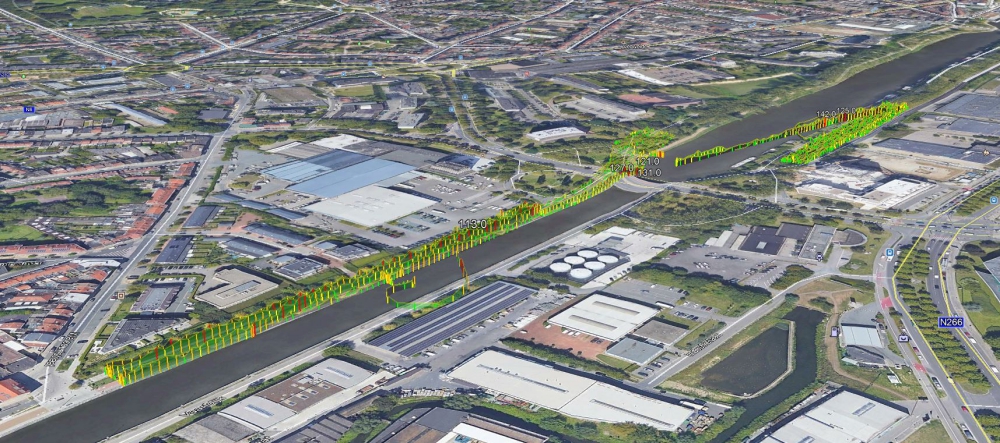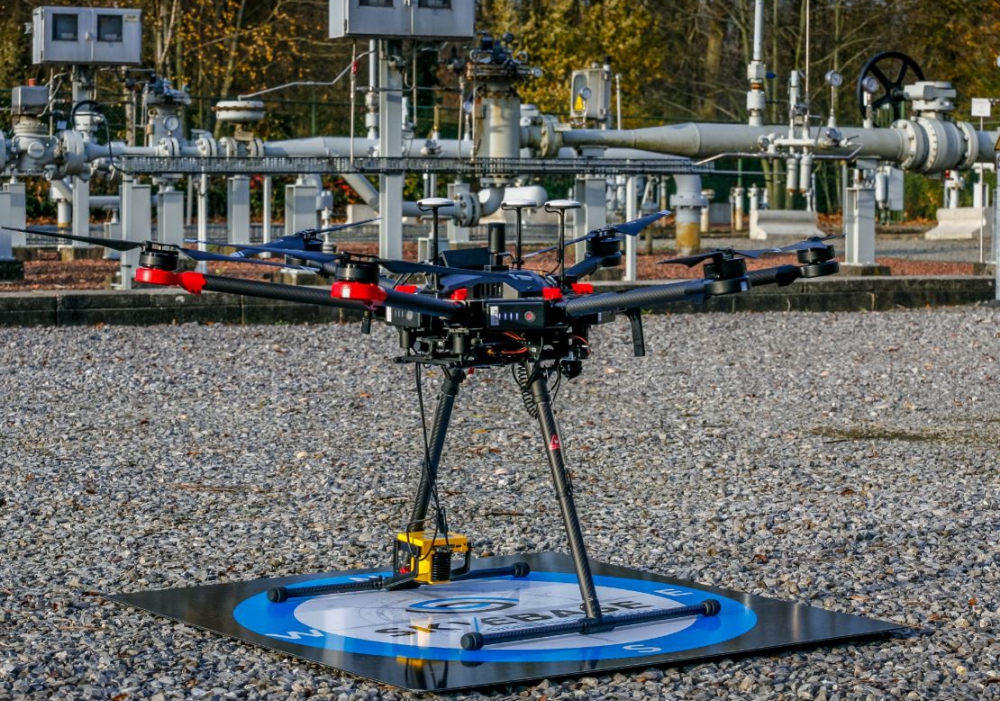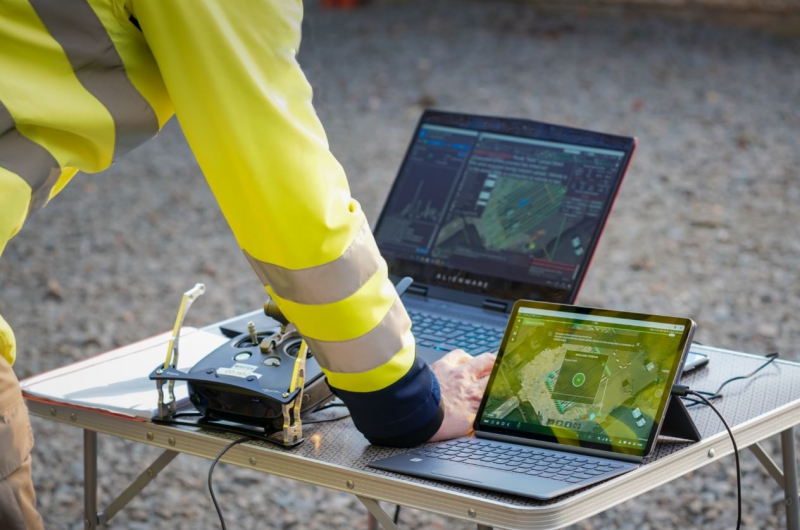In Q4 2020, SkyeBase, a total inspection service provider & inspection platform developer, addressed the request from Fluxys Belgium, a gas infrastructure group headquartered in Belgium, to monitor several zones of their high pressure gas pipeline and decompression installations for methane leaks.
The method proved to be safe, accurate, as well as more labor and cost effective, compared to traditional use of helicopters or ground sniffers and/or fixed sensors.
To perform the natural gas pipeline and facilities leak inspections, SkyeBase’s DJI M600 drone was equipped with Pergam-Suisse’s Falcon methane/natural gas detection laser-based sensor payload. The drone mission was planned using SPH Engineering’s UgCS software, with data being accumulated with UgCS SkyHub hardware. The detection distance was between 30 and 50 meters with a minimum measured value of 125 ppm* x m and 225 ppm x m. The device can measure methane (ch4) and gas containing methane (natural gas).
As a result, hard-to-reach locations were inspected and mapped safe and correct, including hard-to-measure wet, wooded and densely built locations.
“The measured methane emissions can be coherently captured and processed into useful insights to be displayed on a platform and in a report. This generates a quantitative insight to take actions, improve the return on investment, extend usage and reduce environmental risks,”
Bart Daniels, COO at SkyeBase, explains.
During inspections of gas pipes and installations the measured methane values were linked to the GPS coordinates, which made the exact location easy to determine. Findings were reported on the basis of values and GPS locations and provided with technical advice.
“Gas leak inspections with a UAV is a truly promising way to detect methane. Most importantly, the method allows for safe unmanned access to the asset. It guarantees higher uptime, more accurate and coherent inspection results, reduces inspection costs, and helps visualize gas evolutions. However, it still has a limitation of being not suitable for long distances,”
Alexei Yankelevich, Head of Software Development at SPH Engineering, adds.
* ppm x m = parts per million per meter
Source: Press Release



